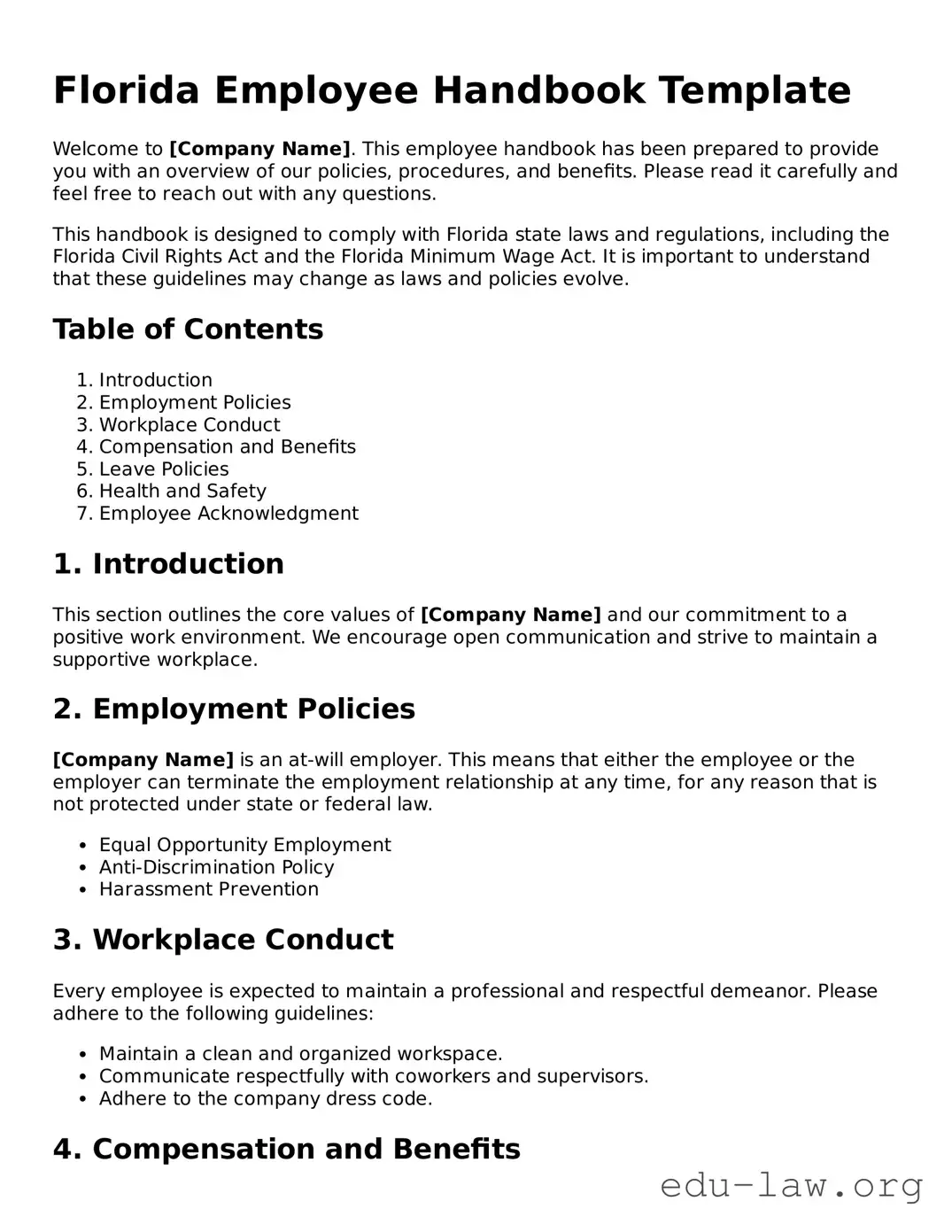Florida Employee Handbook Template
Welcome to [Company Name]. This employee handbook has been prepared to provide you with an overview of our policies, procedures, and benefits. Please read it carefully and feel free to reach out with any questions.
This handbook is designed to comply with Florida state laws and regulations, including the Florida Civil Rights Act and the Florida Minimum Wage Act. It is important to understand that these guidelines may change as laws and policies evolve.
Table of Contents
- Introduction
- Employment Policies
- Workplace Conduct
- Compensation and Benefits
- Leave Policies
- Health and Safety
- Employee Acknowledgment
1. Introduction
This section outlines the core values of [Company Name] and our commitment to a positive work environment. We encourage open communication and strive to maintain a supportive workplace.
2. Employment Policies
[Company Name] is an at-will employer. This means that either the employee or the employer can terminate the employment relationship at any time, for any reason that is not protected under state or federal law.
- Equal Opportunity Employment
- Anti-Discrimination Policy
- Harassment Prevention
3. Workplace Conduct
Every employee is expected to maintain a professional and respectful demeanor. Please adhere to the following guidelines:
- Maintain a clean and organized workspace.
- Communicate respectfully with coworkers and supervisors.
- Adhere to the company dress code.
4. Compensation and Benefits
We value the hard work and dedication of our employees. Here are some key points regarding compensation and benefits:
- Pay periods are bi-weekly, with direct deposit available.
- All employees are eligible for overtime pay as per state law.
- Benefits include health insurance, retirement plans, and paid time off.
5. Leave Policies
[Company Name] complies with all applicable leave laws, including the Family and Medical Leave Act (FMLA) and Florida's sick leave law. Employees are encouraged to utilize their leave benefits as needed.
6. Health and Safety
The health and safety of our employees are our top priority. We adhere to OSHA regulations and maintain a safe workplace. Employees should report any hazards or safety concerns immediately.
7. Employee Acknowledgment
Each employee must acknowledge receipt of this handbook and agree to adhere to the policies it contains. Please sign below:
Employee Name: ____________________________
Date: ____________________________
